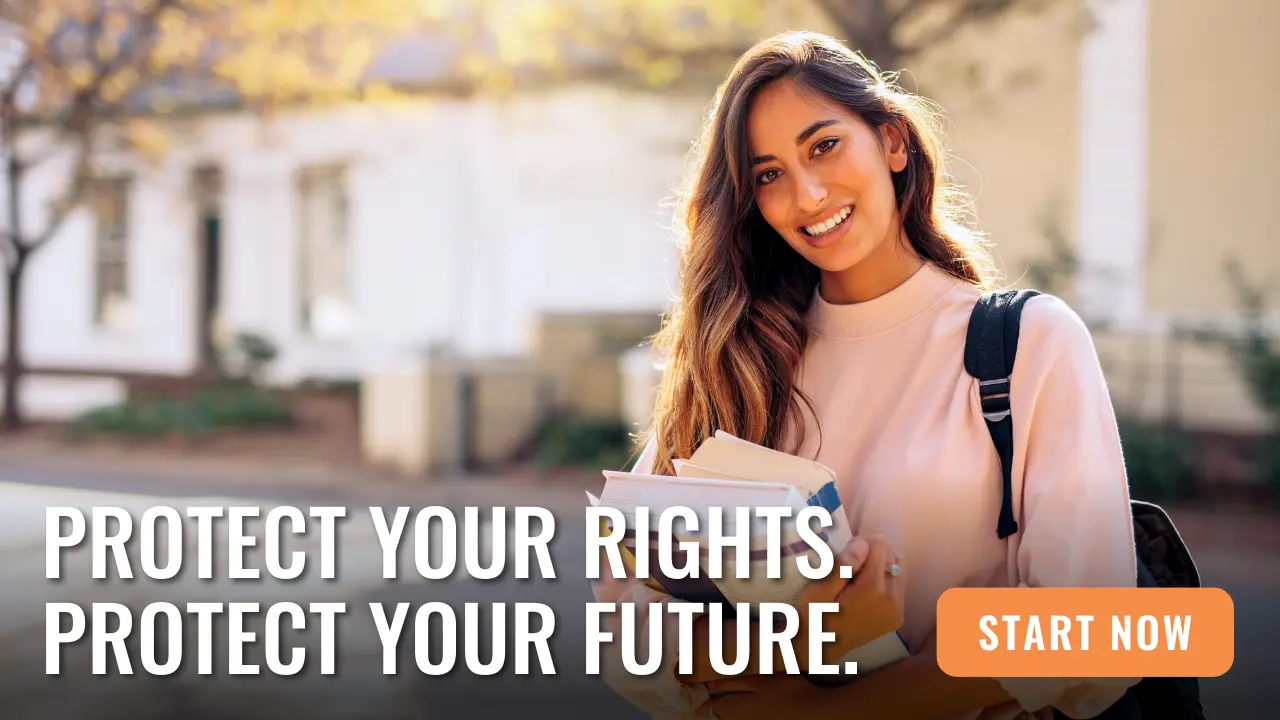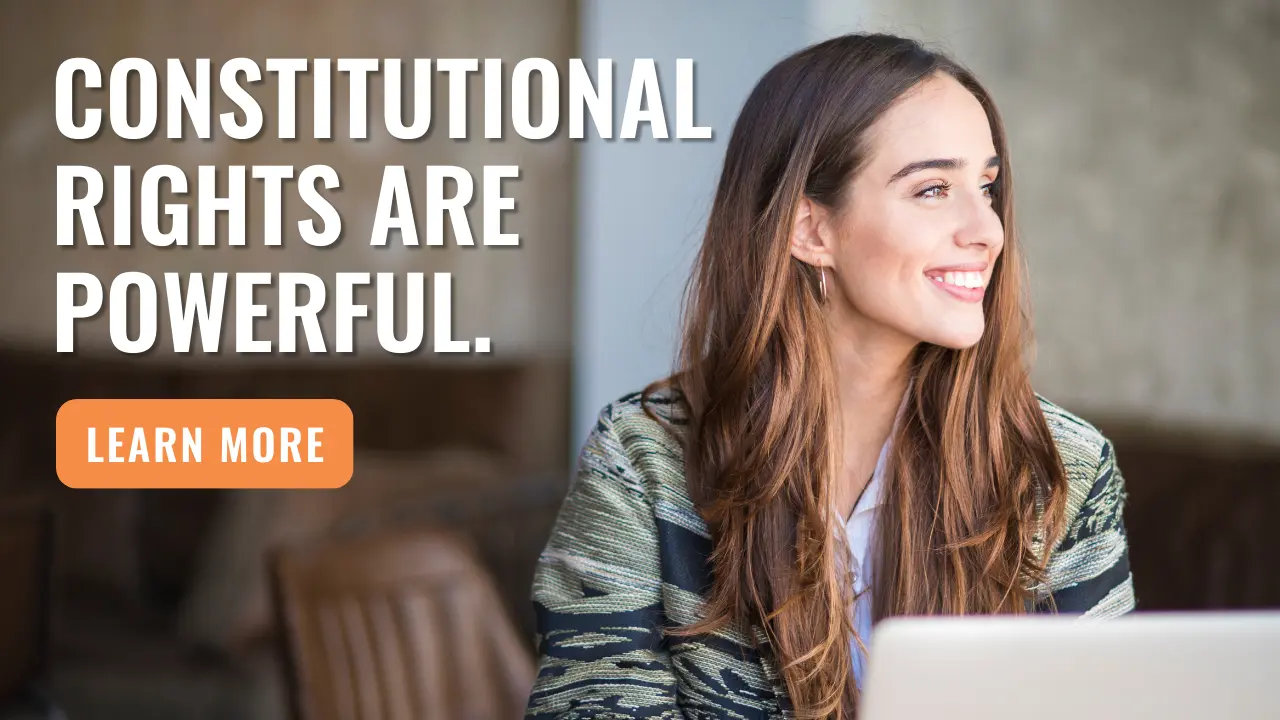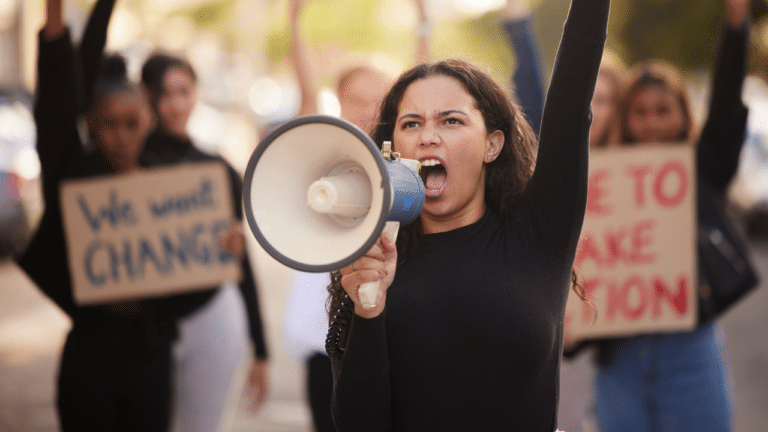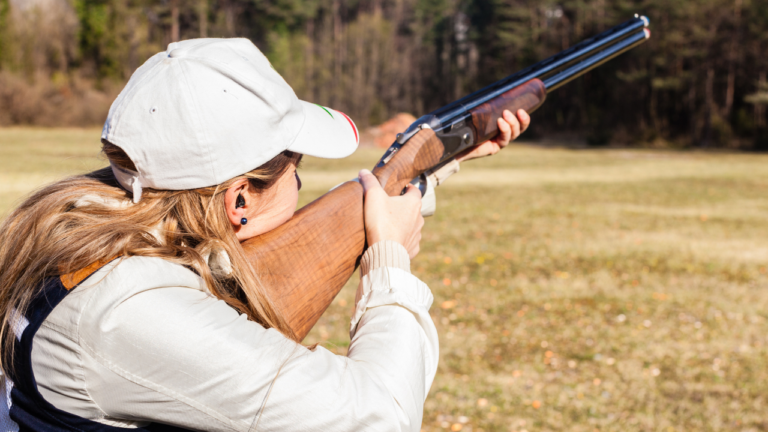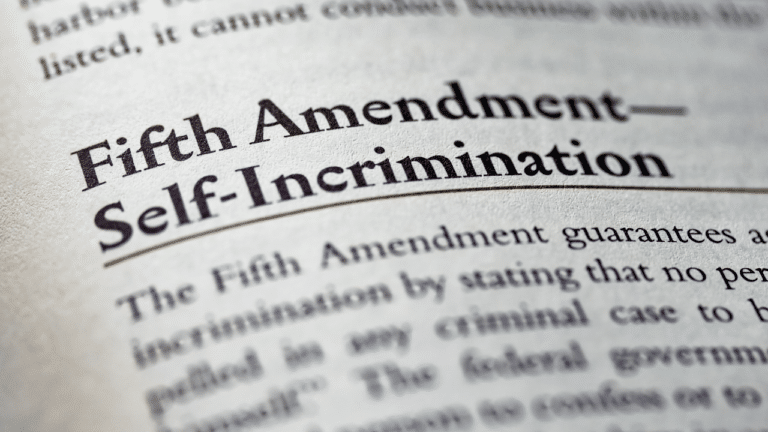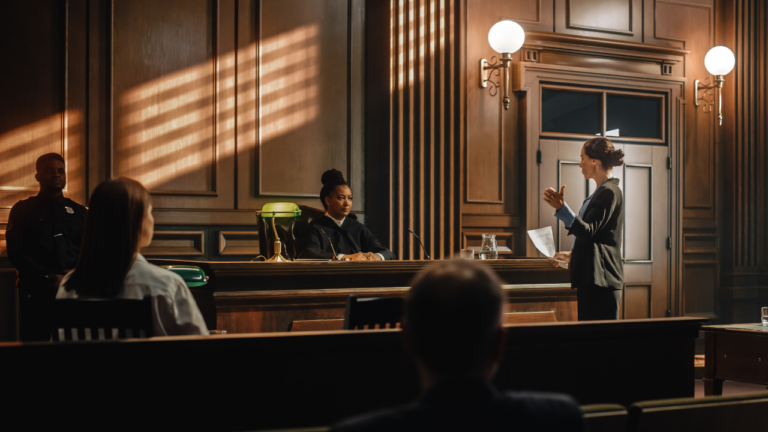The Twenty-Sixth Amendment lowered the voting age from 21 to 18 years old.
WHAT IS THE TEXT TO THE TWENTY-SIXTH AMENDMENT TO THE CONSTITUTION?
Section 1 The right of citizens of the United States, who are eighteen years of age or older, to vote shall not be denied or abridged by the United States or by any State on account of age.
Section 2 The Congress shall have power to enforce this article by appropriate legislation.
WHAT IS THE HISTORICAL ORIGIN OF THE TWENTY-SIXTH AMENDMENT?
Section 2 of the Fourteenth Amendment originally established that voting is limited to white male Americans 21 years and older. Since then, the Constitution has been amended two more times to include black men and women. But during the 20th century, the public’s reaction to changes in the draft led to an amendment to lower the voting age.
“OLD ENOUGH TO FIGHT, OLD ENOUGH TO VOTE”
Over the course of its brief history, the United States took part in several wars and conscripted citizens to fight in them. The first nationwide military draft was during the Civil War, when Congress passed the Civil War Military Draft Act of 1863. This draft included men ranging from ages 20-45. In 1917, President Woodrow Wilson signed the Selective Services Act in anticipation of World War I. This act required all men ages 21-30 to enroll in the Selective Service System. It was discontinued after the war, but in 1940 a peacetime draft was created.
By 1942, the U.S. had officially entered During World War II. It was then discovered that half of the 20 million men who registered during the peacetime draft were in fact, ineligible. There was suddenly a strong need to create soldiers as quickly as possible. President Franklin D. Roosevelt had no choice but to lower the drafting age to 18 years old (and increase the limit to 37 years old), which drew strong criticism. Many found it unfair that those who were old enough to fight and die for their country were inexplicably too young to perform their civic duties. It spurred a youth voting rights movement that coined the slogan, “Old enough to fight, old enough to vote”. Officials in Congress began discussions of lowering the voting age, but eventually nothing came of it.
REACTIONS TO THE VIETNAM WAR
When the U.S. became involved with the conflict in Vietnam in 1964, public opinion was initially positive. Young Americans flocked to enlist, thinking they were doing their part to prevent the spread of communism in Southeast Asia. But the U.S. military had severely underestimated the Viet Cong. American soldiers were unprepared for an enemy that looked identical to their allies, used the jungle to their advantage, and attacked at night.
In 1965, public opinion dwindled as people questioned U.S. involvement. President Lyndon B. Johnson doubled the number of drafted men from 17,000 a month to 35,000, fueling anti-war sentiment. As the war went on, many young men refused to follow the draft. Some claimed to have a disability or filed conscientious objector status. Others openly burned their draft cards in defiance of the government. Anti-war activists organized protests at military recruitment centers. It was the first time in U.S. history that the draft was so heavily resisted.
Meanwhile, government officials once again discussed lowering the voting age, but were indecisive as to how. Will it be with a Congress-instituted law, or by amending the Constitution itself? Congress tested the waters in 1970 when they amended the Voting Rights Act by lowering the minimum voting age to 18. While President Richard Nixon supported the issue and signed the act, he felt that such a change should only be done with a Constitutional amendment.
OREGON VS. MITCHELL COURT CASE
Nixon’s concerns about how the voting age should be lowered came into light with the Oregon vs. Mitchell (1970) court case. The full amendments for the Voting Rights Act included:
- Eliminating literacy tests and other similarly biased eligibility requirements at polling stations
- Forbidding states from disqualifying voters in presidential and vice presidential elections based on state residency requirements
- Lowering the voting age in local, state and federal elections from 21 to 18 years old
After these amendments were passed several states sued, claiming that they infringed on states’ rights. The case reached the Supreme Court, and the justices ruled in favor of most of the amendments to the Voting Rights Act. Specifically, they felt Congress did not have the authority to change the lowering voting age for state and local elections, but found it acceptable for federal elections. Splitting hairs in this manner led to confusion during election days.
To avoid future uncertainty, in 1971 Congress introduced an amendment to lower the voting age to 18 years old across all elections. The Senate voted unanimously in favor of the now-called Twenty-Sixth Amendment, which was just as welcomed in the House of Representatives. It was the fastest ratified amendment by the states, taking only two months. Suddenly, 11 million 18-year-old citizens were enfranchised, and put their new voting powers to use. In the 1972 elections, a whopping 55% of young voters ages 18-29 went to the polls.
WHAT DID THE TWENTY-SIXTH AMENDMENT DO?
The Twenty-Sixth Amendment lowered the voting age to 18 years old across all forms of government elections. It was a response to the extreme backlash exhibited by young adults who were appalled that their country was willing to send them to war at the same age they are considered too young to make their voices heard at the polls.
TWENTY-SIXTH AMENDMENT
During times of war the U.S. often enforced a draft, which was accepted by the public. This changed during WWII when the minimum drafting age was lowered to 18 years old. Although criticism died down at the time, it was reignited during the Vietnam war. The number of draftees had doubled, leading many disgruntled young adults to reject the draft. Congress introduced an amendment to lower the voting age, which was quickly passed and ratified.
VOTER TURNOUT AMONG YOUNG ADULTS
Although the Twenty-Sixth Amendment enfranchised older teens, in the decades since, voter turnout between the ages of 18-22 has been low compared to those in older age brackets. Reasons have included unfamiliarity with the candidates and/or issues; inability to visit poll stations because of work, transportation, or location constraints; and not knowing what to do as a first-time voter.
In the early 2000s youth voter turnout improved, due in part to organizations that encourage young adults to vote and provide helpful guides. The 2020 presidential election saw one of the highest participation rates among young voters. Specifically, about 52-55% of young people ages 18-29 went to the polls, a number that was considerably higher than the 2016 election.
TWENTY-SIXTH AMENDMENT COURT CASES
There have been a few court cases regarding the Twenty-Sixth Amendment, challenging various situations that include voter residency, proper identification, and mail-in ballots.
- In Jolicoeur vs. Mihaly (1971), nine 18-year-old students tried to register to vote in various California counties, but were denied because they did not register at their parents’ addresses, even though some of them had been working and living full-time at their current addresses. The State Supreme Court of California ruled in favor of the plaintiffs, explaining that college-aged voters should be treated in the same manner as older voters who move from one city to another.
- In Andrew Goodman Found. vs. Bostelmann (2020), the plaintiffs (a non-profit organization supporting young voters) argued that part of Wisconsin’s voter ID law violates the Twenty-Sixth Amendment. They felt that the requirements for an acceptable voter ID are too stringent and make it difficult for young people to vote. The District Court for the Western District of Wisconsin noted that the case was very similar to one they had recently ruled, which was that the defendant did not violate the Twenty-Sixth Amendment. Since the two cases were similar, the court denied the plaintiffs’ preliminary injunction motion.
- In Texas Democratic Party vs. Abbott (2020), the case revolved around whether a law involving mail-in ballots was unconstitutional. In Texas, mail-in ballots are only available to voters 65 and older, with no excuses required. Younger voters who want absentee ballots require an excuse. However, during the COVID-19 pandemic, voters of all ages were hesitant to go to the polls in person. The plaintiffs requested that the law be amended and allow all voters under 65 to vote via mail. The judge for the U.S. District Court for the Western District of Texas ruled that the law did indeed violate the Twenty-Sixth Amendment. However, when the state of Texas appealed to the U.S. Court of Appeals for the 5th Circuit, the district judge’s order was put on hold. The plaintiffs went to the Supreme Court to request the hold to be lifted, but their request was rejected by the justices. The 5th Circuit Court eventually ruled that the law did not violate the Twenty-Sixth Amendment and should remain unchanged, regardless of the pandemic.



